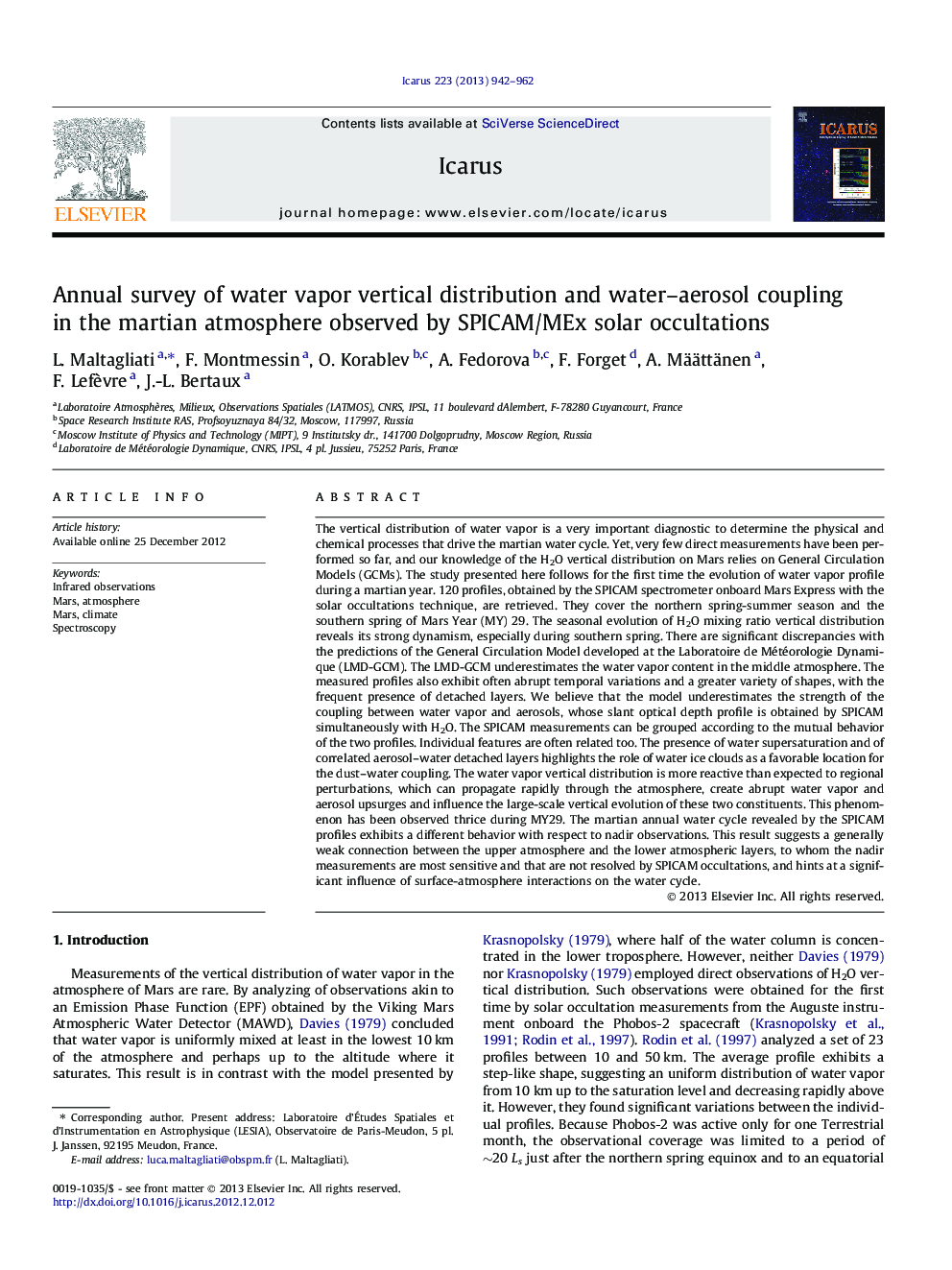| Article ID | Journal | Published Year | Pages | File Type |
|---|---|---|---|---|
| 1773365 | Icarus | 2013 | 21 Pages |
The vertical distribution of water vapor is a very important diagnostic to determine the physical and chemical processes that drive the martian water cycle. Yet, very few direct measurements have been performed so far, and our knowledge of the H2O vertical distribution on Mars relies on General Circulation Models (GCMs). The study presented here follows for the first time the evolution of water vapor profile during a martian year. 120 profiles, obtained by the SPICAM spectrometer onboard Mars Express with the solar occultations technique, are retrieved. They cover the northern spring-summer season and the southern spring of Mars Year (MY) 29. The seasonal evolution of H2O mixing ratio vertical distribution reveals its strong dynamism, especially during southern spring. There are significant discrepancies with the predictions of the General Circulation Model developed at the Laboratoire de Météorologie Dynamique (LMD-GCM). The LMD-GCM underestimates the water vapor content in the middle atmosphere. The measured profiles also exhibit often abrupt temporal variations and a greater variety of shapes, with the frequent presence of detached layers. We believe that the model underestimates the strength of the coupling between water vapor and aerosols, whose slant optical depth profile is obtained by SPICAM simultaneously with H2O. The SPICAM measurements can be grouped according to the mutual behavior of the two profiles. Individual features are often related too. The presence of water supersaturation and of correlated aerosol–water detached layers highlights the role of water ice clouds as a favorable location for the dust–water coupling. The water vapor vertical distribution is more reactive than expected to regional perturbations, which can propagate rapidly through the atmosphere, create abrupt water vapor and aerosol upsurges and influence the large-scale vertical evolution of these two constituents. This phenomenon has been observed thrice during MY29. The martian annual water cycle revealed by the SPICAM profiles exhibits a different behavior with respect to nadir observations. This result suggests a generally weak connection between the upper atmosphere and the lower atmospheric layers, to whom the nadir measurements are most sensitive and that are not resolved by SPICAM occultations, and hints at a significant influence of surface-atmosphere interactions on the water cycle.
► We study H2O vertical profiles in Mars atmosphere with SPICAM solar occultations. ► The measured vertical distribution differs significantly from model predictions. ► Evolution of H2O and aerosols is strongly reactive to local perturbations. ► Connection between water vapor and aerosol profiles is tighter than expected. ► Water behavior in lower atmospheric layers is detached from the upper atmosphere.
